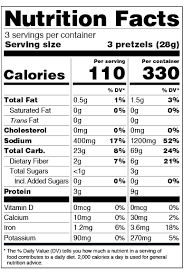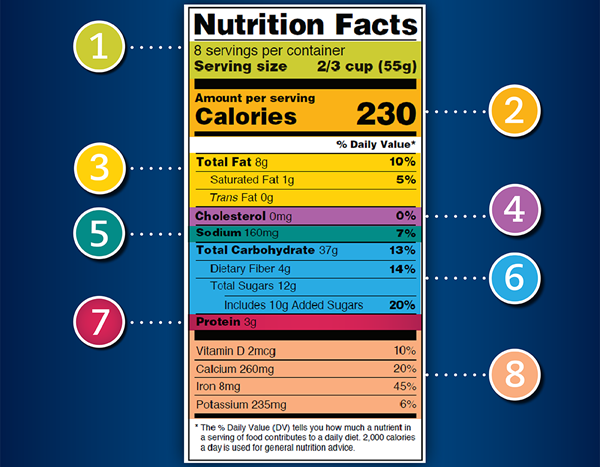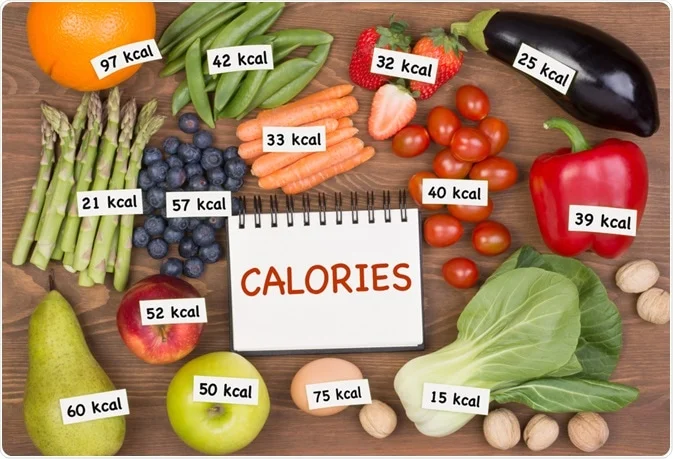In today’s world of convenience foods and endless product options, understanding nutrition labels is essential for making informed, healthy food choices. Whether you’re trying to lose weight, manage a health condition, or simply improve your overall wellness, knowing how to read a nutrition label can help you navigate the grocery store with confidence. But for many of us, nutrition labels can be confusing or overwhelming.
Fear not! In this blog post, we’ll break down the key elements of a nutrition label, explain what each one means, and offer tips on how to interpret the information like a pro. With these skills, you’ll be empowered to make better food choices that align with your health goals.



What’s on a Nutrition Label?
A nutrition label is designed to provide all the essential information about the nutrients in a food product. By law, most packaged foods in the U.S. (and many other countries) are required to have a nutrition facts label, which gives you a snapshot of what’s inside the package. The label is usually divided into several sections, each with specific information.
Let’s take a closer look at each section and what it means.
1. Serving Size
The serving size is the first piece of information you’ll see on the label. This number is the amount of food that the nutritional values listed below apply to, and it’s often expressed in familiar units (like cups, ounces, or pieces).
Why it matters:
Serving sizes are standardized, so they allow for easier comparison between products. However, be aware that most people tend to eat more than one serving, so you may need to adjust the numbers based on how much you actually consume.
Pro Tip:
Check the serving size and compare it to how much you typically eat. If you’re eating two servings, you’ll need to double the numbers on the label.
2. Calories
Calories are the unit of energy that food provides to your body. The number of calories in a product is listed right under the serving size.
Why it matters:
Managing your calorie intake is important for maintaining a healthy weight. If you’re looking to lose or gain weight, knowing how many calories are in your food can help you stay on track with your goals.
Pro Tip:
If you’re watching your calorie intake, make sure to calculate the total calories you’ll consume based on how many servings you eat. Also, pay attention to the calories from fat—this can help you assess whether the product is high in unhealthy fats.
3. Total Fat
Total fat refers to all the fats in the product, including saturated fat, unsaturated fat, and trans fat. It’s broken down into the following categories:
- Saturated Fat: This type of fat is typically found in animal products (like red meat and dairy) and some plant oils (like coconut oil). Too much saturated fat can increase your bad cholesterol (LDL) and raise your risk of heart disease.
- Trans Fat: This is the worst type of fat. It’s found in partially hydrogenated oils and can increase your risk of heart disease. Fortunately, many manufacturers are reducing or eliminating trans fats from their products.
- Unsaturated Fat: This is the “healthy” fat found in plant-based oils, nuts, seeds, and fish. These fats are beneficial for heart health when consumed in moderation.
Why it matters:
Not all fats are created equal. Aim to limit saturated and trans fats while choosing healthier fats like unsaturated fats. Look for products with less than 5 grams of total fat per serving if you’re trying to lower your fat intake.
Pro Tip:
Choose products that are low in trans and saturated fats, and consider the types of fats in your overall diet. Foods rich in unsaturated fats, like avocados and nuts, are excellent options.
4. Cholesterol
Cholesterol is a fat-like substance found in animal products like meat and dairy. High levels of cholesterol in your diet, particularly saturated and trans fats, can increase your blood cholesterol levels and raise your risk of heart disease.
Why it matters:
The general recommendation is to limit cholesterol intake to less than 300 milligrams per day. If you have high cholesterol or heart disease, you may need to consume even less.
Pro Tip:
Look for foods that are low in cholesterol (less than 5 milligrams per serving). Plant-based foods, like fruits, vegetables, and whole grains, are naturally cholesterol-free.
5. Sodium (Salt)
Sodium is an essential mineral, but too much can lead to high blood pressure, heart disease, and kidney problems. Many processed foods contain high amounts of sodium.
Why it matters:
The recommended daily sodium intake for most adults is 2,300 milligrams (about one teaspoon of salt), but those with high blood pressure, diabetes, or kidney disease should aim for even less (around 1,500 mg per day).
Pro Tip:
Look for products that contain less than 140 mg of sodium per serving to keep your sodium intake in check. Beware of “low-sodium” labels—some products may still be high in sodium compared to what you should consume in a single meal.
6. Total Carbohydrates
Carbohydrates are the body’s main source of energy. This section lists the total number of carbohydrates in a serving, which includes sugars, starches, and fiber.
- Dietary Fiber: A type of carbohydrate that your body can’t digest. Fiber helps with digestion, controls blood sugar levels, and supports heart health.
- Sugars: This includes both natural sugars (like those in fruit) and added sugars (like those in processed foods).
Why it matters:
Fiber is a key nutrient for gut health and weight management. Try to choose foods with at least 3 grams of fiber per serving and limit added sugars to less than 10% of your daily caloric intake (about 50 grams for a 2,000-calorie diet).
Pro Tip:
Check the “Added Sugars” line—products with high added sugars can contribute to weight gain, blood sugar spikes, and other health issues. Aim to choose products with no or minimal added sugars.
7. Proteins
Protein is essential for muscle repair, immune function, and overall body growth. The protein listed on a label is the amount of protein per serving.
Why it matters:
Protein is a critical building block for your body, especially if you’re physically active or trying to build muscle. A balanced diet includes a healthy amount of protein, whether from animal or plant-based sources.
Pro Tip:
Look for products that contain at least 5–10 grams of protein per serving, especially if you’re trying to stay full longer and build or maintain muscle.
8. Vitamins and Minerals
In the lower section of the nutrition label, you’ll find a list of important vitamins and minerals, such as Vitamin D, Calcium, Iron, and Potassium. These micronutrients play vital roles in overall health.
Why it matters:
Adequate intake of vitamins and minerals is essential for maintaining a healthy body. Calcium supports bone health, potassium helps regulate blood pressure, and iron is necessary for oxygen transport in your blood.
Pro Tip:
Check the percentage of the daily value (%DV) to see how much of each nutrient the product provides. If it’s 20% or more, that’s a high source of the nutrient. For a healthy diet, aim for a variety of nutrients throughout the day.
9. % Daily Value (%DV)
This percentage shows how much of a nutrient is in one serving of the product, based on a daily 2,000-calorie diet. A higher percentage means the food is a good source of that nutrient.
Why it matters:
It helps you understand whether a food is high or low in a specific nutrient. Generally, 5% DV or less is low, and 20% DV or more is high.
Pro Tip:
Use the %DV to gauge whether a product fits into your daily nutrition needs. For example, aim to get at least 20% of your daily value of fiber from foods like fruits, vegetables, and whole grains.
Conclusion: Mastering the Art of Reading Labels
With practice, reading nutrition labels can become second nature. By focusing on serving sizes, calories, key nutrients (like fat, sodium, and fiber), and daily value percentages, you’ll be able to make better choices that support your health goals. Don’t be afraid to spend a few extra seconds perusing the label next time you’re in the grocery store—you’ll be making informed choices that pay off in the long run.
Pro Tip:
Take your time when shopping and choose foods that are nutrient-dense rather than just calorie-dense. A little label literacy goes a long way in helping you lead a healthier, more balanced life.
Got more tips for reading nutrition labels or questions about a particular ingredient? Drop them in the comments below! Happy reading, and happy eating!




